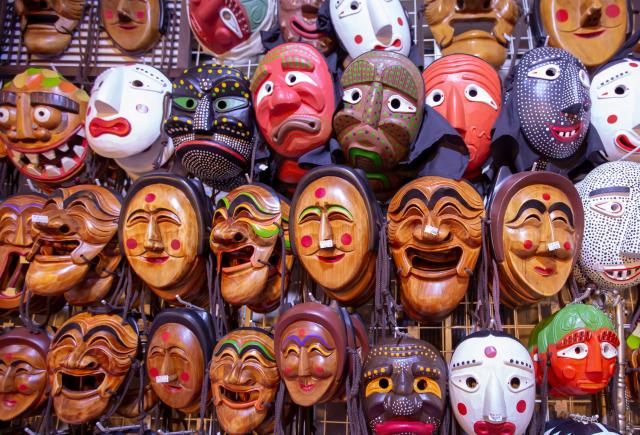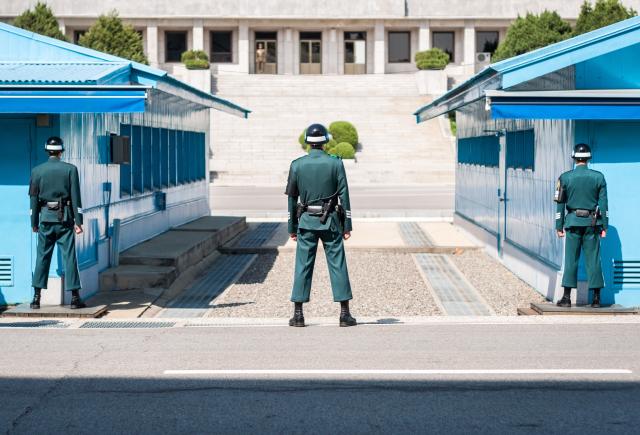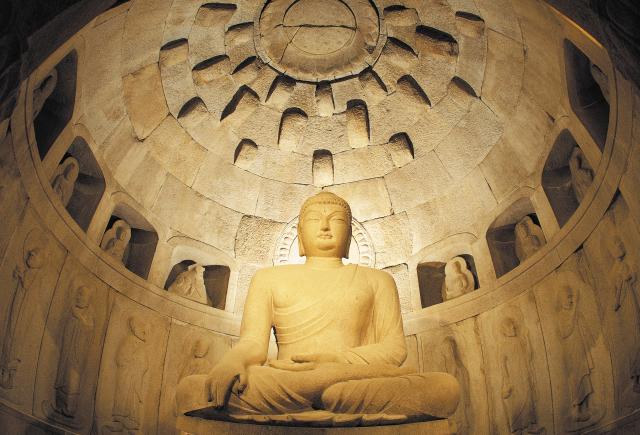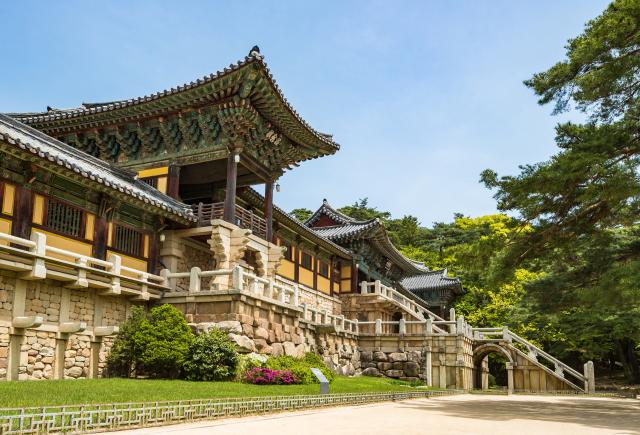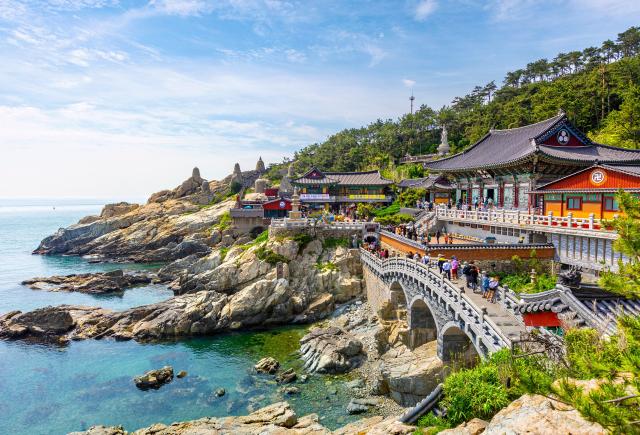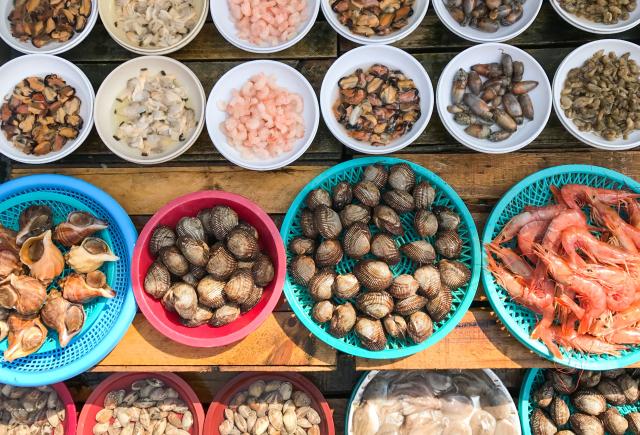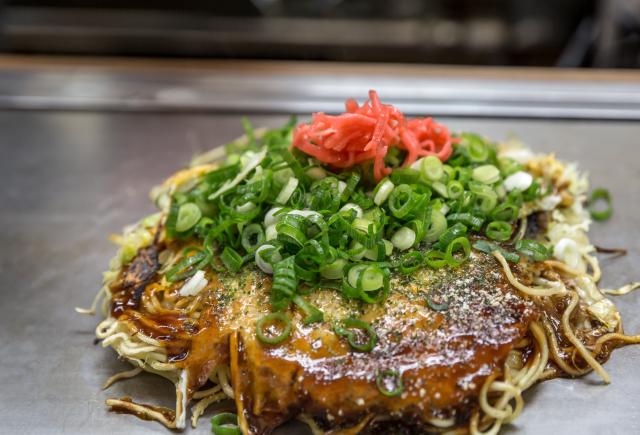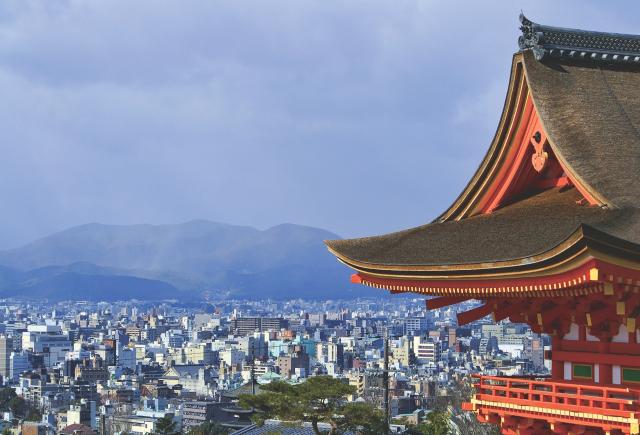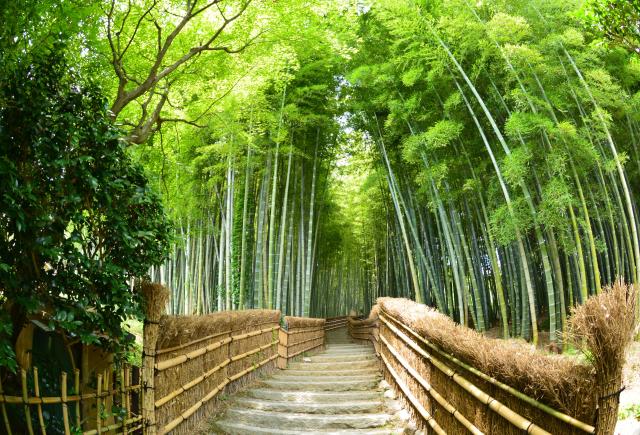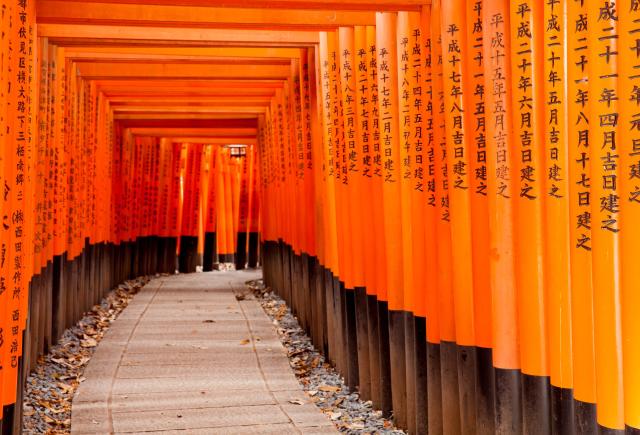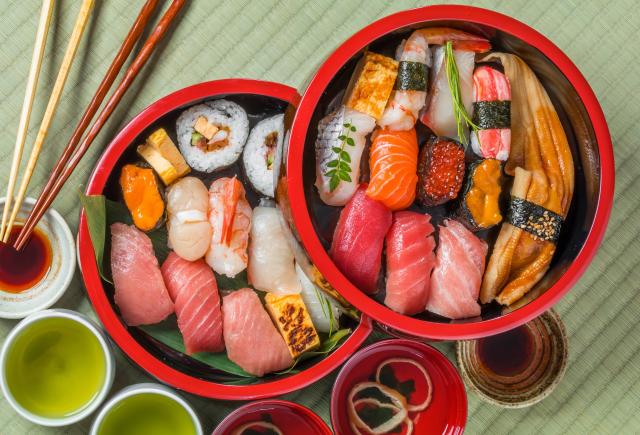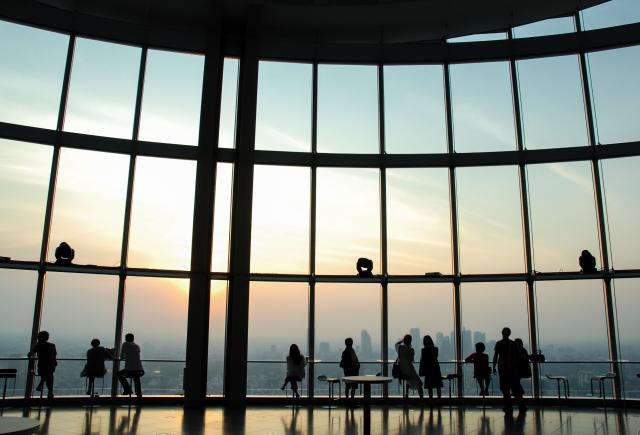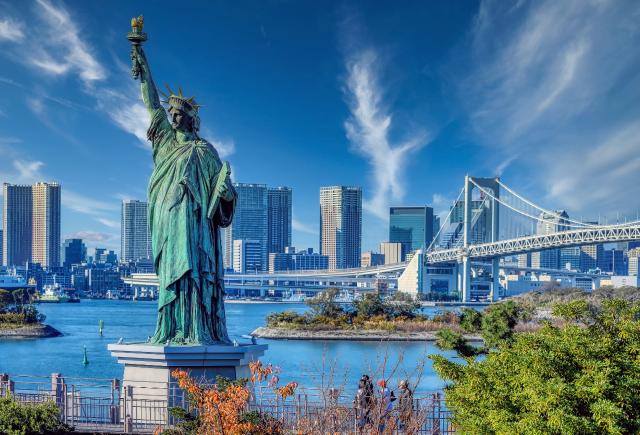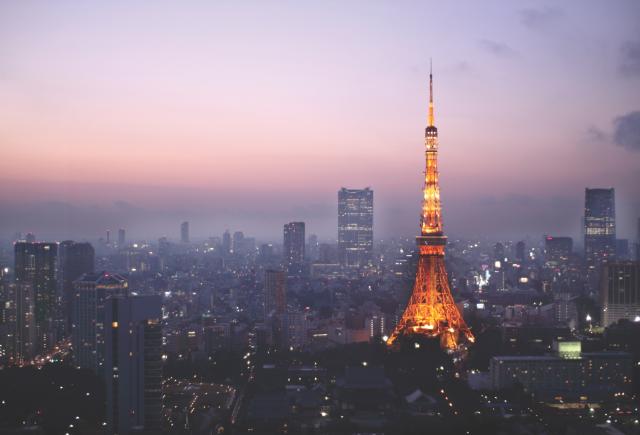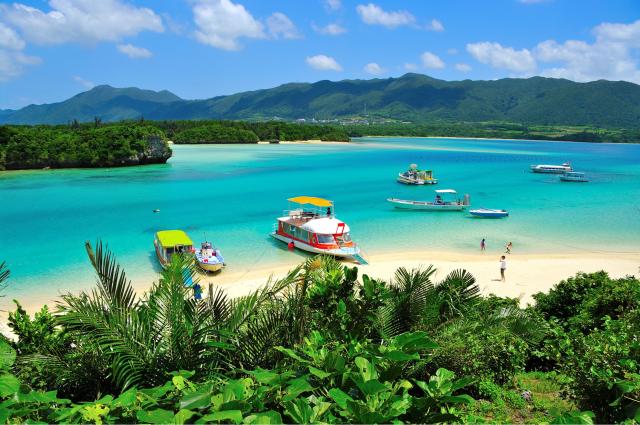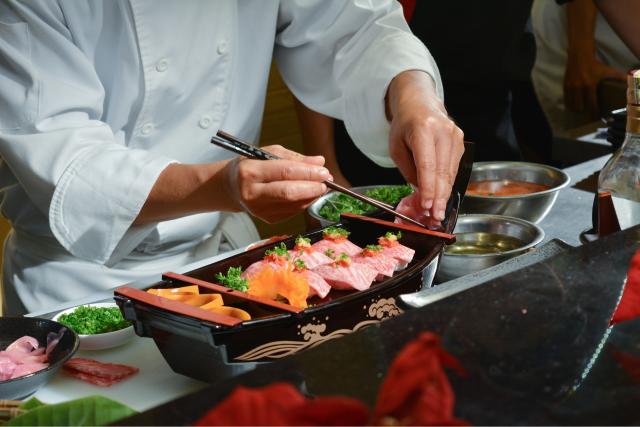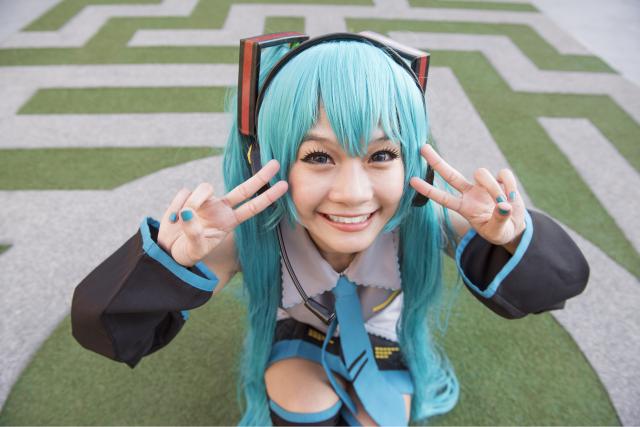Highlights of Korea and Japan - Tour of Japan - Japanspecialist
Highlights of Korea and Japan
17 Days
Overview
Experience the highlights of Korea and Japan - an exciting journey between two cultures.
High-tech metropolises, ancient imperial capitals, exquisite food, holy islands, sacred places, sea views and jaw-dropping scenery - you will experience it all on this trip!
Suggested itinerary
Be ready to kick off your unforgettable East-Asian journey! You'll depart from Europe to Seoul on an overnight flight so try to get some good sleep to get ready for the many adventures that await.
You arrive at Seoul Incheon Airport and transfer by private car to your modern and centrally located hotel. You'll be staying in either Myeongdong or Insadong, two of the most exciting areas in town, full of action, neon lights, good shopping, and excellent restaurants.
You have plenty of time in South Korea's capital, a city in rapid development, where ancient treasures, old houses, and streets are nestled among neon lights and skyscrapers. Seoul boasts beautiful parks and mountains that offer magnificent views.
You will probably be tired on your arrival day, but if you still feel energetic after the long flight, visit Seoul Tower, which rising almost 500 metres above the city, provides dramatic views of the city from its perch on the side of Mount Namsan. A cable car takes you up the side of the mountain to the base of the tower.
Take this day to experience this bustling capital. First, let us travel back time with a visit to the Royal and Imperial history of Korea.
Start your Seoul tour at the central and historical Deoksugung, the "the palace of virtuous longevity," whose gate faces City Hall Plaza. Then continue to Gyeongbokgung Palace, which was the main royal palace of the Joseon dynasty that started in 1392. Built in 1395, it is the largest of the Five Grand Palaces built by the famous Joseon Dynasty and is an impressive and fascinating view into Korea's Imperial history!
After so much history, it is now time to indulge in Seoul's modern delights, so continue to Seoul to Insadong shopping street, with its abundance of wooden tea houses, boutique galleries, antique shops and street vendors.
Insadong is also ideal for buying traditional Korean art, products and souvenirs, such as hanbok (traditional clothing), hanji (traditional paper), traditional teas, and pottery.
End your day with a visit to the Itaewon area, Seoul's most diverse and international district known for its vibrant nightlife and style. Make sure to visit Leeum Samsung Museum of Art and Itaewon' antique furniture street while you are there.
On this second day in Seoul, we recommended visiting the border with North Korea, DMZ (demilitarized zone), which is only a half-hour drive from Seoul.
DMZ was established by the provisions of the Korean Armistice Agreement in 1953 to serve as a buffer zone between North Korea and South Korea. DMZ is the border barrier that divides the Korean Peninsula roughly in half. It's 250 kilometres (160 miles) long and about four kilometres (2.5 miles) wide. The DMZ is the most heavily armed border on the earth, which is a fascinating look at the political climate of these two nations.
During your tour to DMZ (reservation required), you will also visit Freedom Bridge, 3rd Hidden Tunnel and DMZ Exhibition, Dora Observatory and Dora Mountain Station.
Today you'll leave Seoul and take the high-speed train KTX across the country to Gyeongju, Korea's most famous historical landmark. This ancient city was Korea's ancient capital from 57 BC. to 935 AD. and is known as "the museum without walls," thanks largely to Gyeongju National Museum, which houses thousand-year-old artefacts such as crowns of gold, ceramics and stone sculptures.
Also, take a stroll through Tumuli Park, where you can see royal tombs and the romantic Anapji Pond, which is especially beautiful in the evening. An absolute must-see is the ancient Seokguram Cave, located just outside the city (taxi recommended). The cave is a UNESCO World Heritage site and houses some of the world's most impressive - and oldest - Buddha sculptures.
We suggest you dedicate this day to Gyeongju's nearby Bulguksa Temple, one of Korea's largest and most-visited temples.
Bulguksa Temple is an icon of Buddhist culture from the Silla kingdom. The temple was built in 528 BC during the 15th year of King Beop-Heung's reign (514-540) to wish for peace and prosperity for all. It was later rebuilt in 751.
Unfortunately, the temple caught fire during the Imjin War (1592-1598), and after the war, it suffered serious damage and was often the target of theft. Since 1920, the temple has undergone continual restoration work. The temple now holds seven national treasures, additional important heritages and was designated a World Cultural Heritage Site along with the nearby Seokguram Grotto by UNESCO in December 1995.
If you would like to experience something unique, we can also arrange an overnight stay at a Buddhist temple in Gyeongju, where you will experience the life of a Buddhist monk.
A short train ride takes you to the south-eastern tip of the Korean Peninsula and the port city of Busan, Korea's second-largest city.
As soon as you step out of the train station, you'll be fascinated by the city's unique and relaxed atmosphere. Here the sea is omnipresent as the city stretches along the coast of the Sea of Japan.
In summer, the city's beaches are among the most popular in the country, so head out to Haeundae Beach and enjoy an afternoon of sunshine and beach fun! A few kilometres east of the city centre is the Haedong Yonggungsa Temple which dates back to the 14th century and offers lovely sea views. Later, head out to the Bupyeong Kkangtong Night Market for a culinary adventure.
Busan is also famous for having Korea's most delicious fish and seafood. Visit the Jagalchi fish market, which is Korea's largest fish market! Here are also great shopping opportunities with the world's largest department store, Shinsegae Centum City.
A rewarding afternoon activity would be a visit to Yongdusan Park with its 120 metre-high Busan Tower. Yongdu means "dragon's head", and "san" means "mountain". The name is an allusion to the similarity of the mountain park, which is said to resemble a dragon's head. One of the Yongdusan Park highlights is the statue of Yi Sun-sin, Korea's 16th-century naval hero.
It is time to say goodbye to Korea and take an early morning high-speed ferry from Busan to Fukuoka (about three hours), the largest city on Japan's southern island, Kyushu. From here, you continue with the shinkansen (bullet train) to Hiroshima (one hour).
Hiroshima is now a modern city with a remarkable history. Visit the sobering and hugely impressive Hiroshima Peace Museum and the beautiful Peace Park that surrounds it. Here you will also find the Atomic Bomb Dome – the only building that survived the atomic bombing.
Afterwards, you can visit the colourful pedestrian street Hondori and try okonomiyaki: a delicious local speciality consisting of noodles, cabbage, and pork.
A short train and ferry ride (50 minutes) will take you to the small island of Miyajima. Since ancient times, Miyajima has been considered a sacred place within the Japanese Shinto religion, and for centuries only priests and wild animals could enter the island.
The highlight is the UNESCO-protected Itsukushima Shrine, built on pillars above the water so as not to touch the sacred ground. Equally impressive is the shrines' 16-metre-high red torii (Shrine gate), one of Japan's three officially most beautiful sights.
After enjoying a local delicacy kakizosui (rice porridge with fresh oysters), it is time for some exercise; let's spend the afternoon exploring Momijidani Valley Park on foot and take the trail up to Mt. Misen. There is also an escape in the form of a ropeway to the top. After reaching the top, you will be rewarded with beautiful views of the Inland Sea!
You'll spend the night on the island in a traditional ryokan. Enjoy a hot spring bath and traditional dinner created from fresh, local seafood ingredients.
After a delicious Japanese breakfast at your ryokan, take the ferry and then train back to Hiroshima. From here, you can catch the shinkansen to Kyoto.
Kyoto was the capital of Japan from 794 to 1868, and the entire city is a UNESCO World Heritage Site thanks to its enormously well-preserved ancient culture and traditions. The city has over 1600 temples and 400 Shinto shrines and is ranked by visitors among the most beautiful cities in the world.
After your arrival by train, have a quick but tasty Japanese set menu lunch at the underground restaurant arcade in front of Kyoto Station. Then, spend an afternoon exploring the best sights in central Kyoto, notably the majestic Nijo Castle, which was built in 1603 as the Kyoto residence of Tokugawa Ieyasu, the first shogun of the Edo Period (1603-1867).
Afterwards, take the bus Northwest and visit the Golden Pavillion (Kinkaku-ji), an impressive historic landmark, and the Ryoan-ji temple, with its lush gardens and world-famous Zen Garden, next to which you can sit down and meditate.
On this day, get out and explore the mountainous northwestern part of Kyoto, notably Arashiyama and Sagano; it's here where you'll discover the true heart and soul of ancient Kyoto.
Take a local train from Kyoto station and travel to Arashiyama Station. From Arashiyama Station, walk to Togetsukyo bridge (over Katsura river) for an impressive view of the hills of Arashiyama, which are lined with blossoming cherry trees in spring and fiery red-yellow autumn leaves in October.
Then, enter the atmospheric Sagano Bamboo Forest and take plenty of time to enjoy the views on central Kyoto and make sure to visit Tenryu-ji temple, with its carefully laid-out garden and Daikaku-ji temples with the marvellous Ozawa Pond.
If you have some time left, consider travelling a bit further north to visit the Takao region, where you can find even more stunning mountain and river landscapes. In spring and autumn, consider taking the Kiyotaki river walk trail, one of the best scenic hikes you can take in Kyoto's nature.
Start your second full day in Kyoto by visiting the wonderful eastern part of the city known as Higashiyama. Take the bus to the famous Ginkaku-ji (Silver Pavilion), home to one of Japan's most fascinating landscape gardens. It's also the starting point of the Philosopher's Path, a trail along a small stream that's lined with Japanese cherry trees leading you to Nanzen-ji temple. This path embodies the essence of Kyoto's beauty and atmosphere.
Continuing further south, you will reach the iconic Kiyomizu-dera, from which you can admire sweeping views of Kyoto. The streets leading up to the temple – Ninzenzaka and Sannenzaka hills - are lined with stores where you can try on Japanese kimonos and sample delicious snacks. Close by is the famous Sanjusangendo Hall with its 1001 Buddha statues.
Finally, further to the south, there is the Fushimi-Inari Shrine which you will instantly recognize due to its countless number of red Shinto-gates all lined up one by one to create long red tunnels. A famous Kyoto landmark and a rewarding place to visit if you would like to get to the essence of Kyoto's traditions and religion.
Today you will leave Imperial Kyoto and make the final shinkansen trip of your Japan journey, two and a half hours towards Tokyo, the capital of modern Japan. For lunch, make sure you taste some local ramen or try one of the excellent sushi restaurants near Tsukiji Market.
An ideal afternoon sightseeing schedule would include a visit to Hamarikyu Landscape Garden (walking distance from Tsukiji), from which you can take the Sumida River boat north to the Asakusa area, a unique opportunity to see Tokyo from a different angle.
Asakusa is one of the oldest historical areas of Tokyo. Make sure to visit the impressive Sensoji temple, the oldest in Tokyo. If you have more time, visit the adjacent Ueno area with the impressive Tokyo National Museum.
Discover the hip districts of Harajuku and Shibuya, where Asian fashion and subcultures are born.
Visit the famous scramble crossing in Shibuya, the busiest in the world, and head to Shibuya Sky's top floor for some panoramic views of Tokyo (and Mt. Fuji).
After, make sure to stroll down Omotesando boulevard with Omotesando Hills shopping mall, designed by famous contemporary Japanese architect Tadao Ando. These fascinating neighbourhoods offer countless shops for fashion lovers and are full of unique pieces you'll only find in Japan. If you're into art and design, make sure you visit the Mori Art Museum in Roppongi Hills tower.
Fill your second and final full day in Tokyo with more of the city's sights like Odaiba in Tokyo Bay. Here you will find the relaxing Oedo Onsen Monogatari (large hot spring theme park) and Miraikan (National Museum of Emerging Science and Innovation). Or visit the innovative exhibition at Teamlab Borderless!
Alternatively, visit Kamakura, a lovely coastal town in Kanagawa prefecture, one hour south of Tokyo. Sometimes called the Kyoto of eastern Japan, it's a historical and religious destination with many hidden temples in the surrounding forest yet is also a lovely place to stroll around exploring the many local shops. One temple you should not miss is Kotoku-in, where you will find an impressive Great Buddha statue.
When evening falls, treat yourself to a sushi or a kaiseki (Japanese haute cuisine) dinner at a high-end Ginza restaurant. We're happy to offer recommendations!
It's time to say "sayonara" (goodbye) or maybe "mata-ne" (see you again) to Japan. You'll be picked up at your hotel in Tokyo and driven to Narita or Haneda airport, from where you will depart to Europe.
We hope your adventure through Korea and Japan has been a journey that will enrich your life forever.
Accommodation
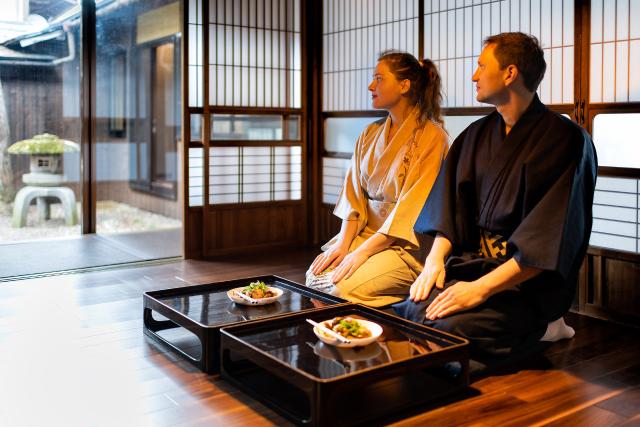 + 5 Photos
+ 5 Photos
A ryokan is a traditional Japanese inn that offers a unique cultural experience. Guests sleep on tatami mats, enjoy traditional meals and may have hot springs & gardens.
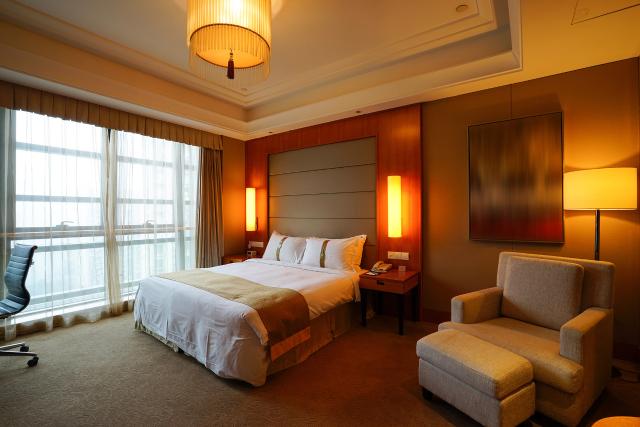 + 5 Photos
+ 5 Photos
Western-style hotels in Japan offer comfort and convenience with amenities like room service and fitness centers. Many are located in major cities and near popular destinations.
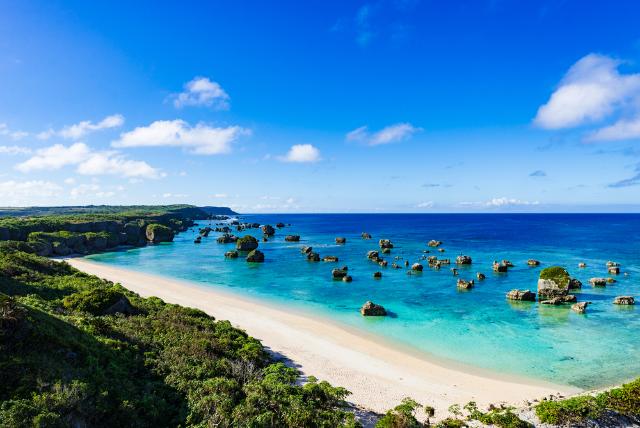 + 5 Photos
+ 5 Photos
Japanese resorts offer a blend of traditional culture and luxury with delicious local cuisine, and activities such as tea ceremonies. Perfect for a unique and luxurious experience.
What is included
What is included
- International return flight tickets
- Checked luggage
- Airport transfers
- 16 nights in western style accommodations
- 1 night in Japanese-style ryokan with onsen
- Breakfast and dinner (selected locations)
- Transport tickets between destinations
- Ferry tickets between Busan and Fukuoka
What is not included
- Local transport (buses, metro, taxis)
- Local city tax which needs to be paid on the spot
- Optional excursions and sightseeing tours
- Travel insurance
Arrange your consultation with an expert
Our experienced travel consultants are ready to customise this itinerary and arrange your dream holiday today. You can either schedule an online meeting with one of our consultants or fill out an enquiry form and we will get back to you with a personalised tailor-made offer.
The price of this service starts at EUR 50,- and is fully reimbursable if you book your tour with us.
What is covered during the consultation?

Experience Japan your way with our experts
We are part of JTB, the largest travel company in Japan and one of the biggest in the world, with over 100 years of experience. We are passionate about this wonderful country, having spent decades designing adventurous itineraries for our clients.
Your tailor-made holiday in four simple steps
The price of this service starts at EUR 50,- and is fully reimbursable if you book your tour with us.


